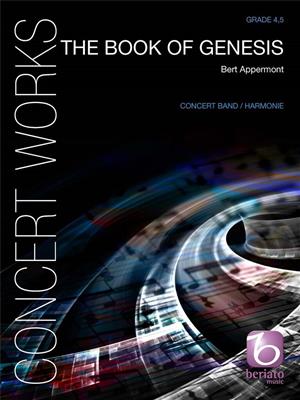Results
-
 £79.20
£79.20Two 17th Century Italian Songs (Concert Band - Score and Parts)
First-rate contemporary music by one of America's top composers for band. An all time best seller for the Class B & C bands which has been on every contest list in the country. Very nice!
Estimated dispatch 7-14 working days
-
 £104.99
£104.99Variations on Shalom Chaverim Wind Band Set (Score & Parts)
Shalom Chaverim is an ancient Hebrew (farewell)song, which was originally sung at the end of a celebration or meeting. It was and is mostly sung as a round. Freely translated the words mean "Goodbye, friends, goodbye and see you again!". The varying moods at a parting have been captured very well by Andreas Schulte in his arrangement 'Variations on Shalom Chaverim'. The composer himself says about the song, 'Although the melody is in a minor key, the overall atmosphere in the song is positive. one wishes each other all the best. Saying goodbye, however, also hurts. When you slow down the pace of the melody and add 'blue notes' in the harmonies, this can be sensed immediately.' Schulte refers here to the first variation. The second variation is very intense with possibly even deeper-felt emotions. 'Variations on Shalom Chaverim' ends on a cheerful and positive note, in fast tempo, and with oriental elements in the melody: 'L'hitra'ot, Shalom' (See you again, and farewell!). 05:00
Estimated dispatch 7-14 working days
-
 £44.55
£44.55Viva La Danse (Concert Band - Score and Parts) - Del Borgo, Elliot
This fine march-styled composition was written by one of the best composers of concert band literature. Use it to open or conclude any of your programs with real style!
Estimated dispatch 7-14 working days
-
 £59.40
£59.40Who Will But Let Himself Be Guided - Bach, Johann Sebastian
The 13th in this now classic series of transcriptions and adaptations of the music of Bach for winds by one of the masters of this highly sensitive art. Featuring the woodwind and saxophone choirs throughout this noble setting of an earlier Bach chorale tune achieves a beautiful sonority and will delight both player and audience.
Estimated dispatch 7-14 working days
-
 £66.95
£66.95Rio Bravo - Scott Watson
Rio Bravo draws on artifacts of iconic western film music to portray the rugged landscape surrounding one of the longest, most fabled rivers in North America. The challenging, arid region along the "brave river" that divides Mexico from the southwestern United States---depicted in many a song and story---is characterized by mountains, canyons, and desert plains. The river, known north of the border as the Rio Grande, has called to itself settlers, cattle drivers, gunslingers, and outlaws. Rio Bravo transports listeners to a time and place where legends of the Old West were made!
Estimated dispatch 7-14 working days
-
 £64.99
£64.99Suite Montmartre - Erik Satie
Erik Satie, born in Honfleur in Normandy (France) in 1866 is undoubtedly one of the most striking personalities in the history of French music. He composed in various, often quite divergent, styles. Besides light-hearted,entertaining works he also wrote several serious compositions, among which the three ballets: Parade, Rel che and Les Aventures de Mercure. However, his piano pieces, such as Trois Gymnopdies orGnossiennes will remain his most popular compositions. Satie cooperated with almost all the great artists of his time: Pablo Picasso, Jean Cocteau, Sergei Diaghilev, Georges Braque and composers Darius Milhaud (Le Groupedes Six) and Claude Debussy. Johan de Meij made an orchestration of three short pieces by Erik Satie: I. Petit Prlude "La Mort de Mr. Mouche" - II. 1re Gymnopdie - III. Rag-Time Parade
Estimated dispatch 7-14 working days
-
 £64.99
£64.99Suite Pigalle - Erik Satie
Erik Satie, born in Honfleur in Normandy (France) in 1866 is undoubtedly one of the most striking personalities in the history of French music. He composed in various, often quite divergent, styles. Besides light-hearted,entertaining works he also wrote several serious compositions, among which the three ballets: Parade, Rel che and Les Aventures de Mercure. However, his piano pieces, such as Trois Gymnopdies orGnossiennes will remain his most popular compositions. Satie cooperated with almost all the great artists of his time: Pablo Picasso, Jean Cocteau, Sergei Diaghilev, Georges Braque and composers Darius Milhaud (Le Groupedes Six) and Claude Debussy. Johan de Meij made an orchestration of three short pieces by Erik Satie: I. Petite Ouverture danser - II. Gnossienne No. 1 (1890) - III. Gambades
Estimated dispatch 7-14 working days
-
 £64.99
£64.99Suite Montparnasse - Erik Satie
Erik Satie, born in Honfleur in Normandy (France) in 1866 is undoubtedly one of the most striking personalities in the history of French music. He composed in various, often quite divergent, styles. Besides light-hearted,entertaining works he also wrote several serious compositions, among which the three ballets: Parade, Rel che and Les Aventures de Mercure. However, his piano pieces, such as Trois Gymnopdies orGnossiennes will remain his most popular compositions. Satie cooperated with almost all the great artists of his time: Pablo Picasso, Jean Cocteau, Sergei Diaghilev, Georges Braque and composers Darius Milhaud (Le Groupedes Six) and Claude Debussy. Johan de Meij made an orchestration of three short pieces by Erik Satie: I. Les Pantins dansent - II. Choral No. 2 - III. Passacaille
Estimated dispatch 7-14 working days
-
 £174.99
£174.99The Book of Genesis - Bert Appermont
Noah's Ark (1997) made its way through the international band scene and turned Bert Appermont into a renowned star whose music is now performed and recorded throughout the world. Fascinated by stories and sagas, he decided to combine different biblical stories into The Book of Genesis. In three movements - 'The Creation', 'Cain & Abel' and 'Babel' - these stories are depicted musically. Ensembles could use one standalone movement or multiple parts of the work in either a competition a concert; a most impressive choice sure to stand out from the crowd.
Estimated dispatch 7-14 working days
-
 £64.99
£64.99Lanier Variants - Johnnie Vinson
During his brief lifetime, Sidney Lanier (1842-1881) was at one time or another a soldier, musician, teacher, lawyer, and a college professor. He is perhaps best remembered as a poet and for the middle school in Fairfax, Virginiawhich bears his name. Inspired by a favorite Lanier quote (Music is love in search of a word), Johnnie Vinson has fashioned a musical theme which captures the essence of this sentiment. With a bit of early American flavor, thismain theme progresses through a series of contrasting variations, culminating in a grand and heroic closing statement. Dur: 4:50
Estimated dispatch 7-14 working days
